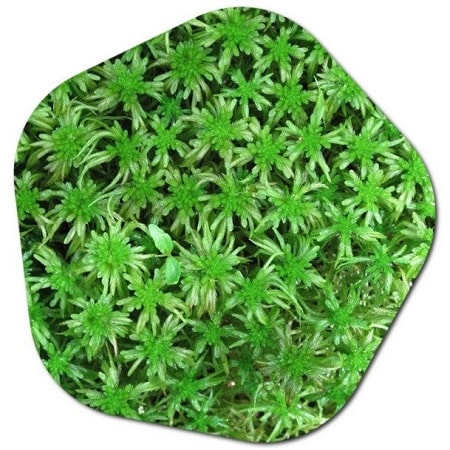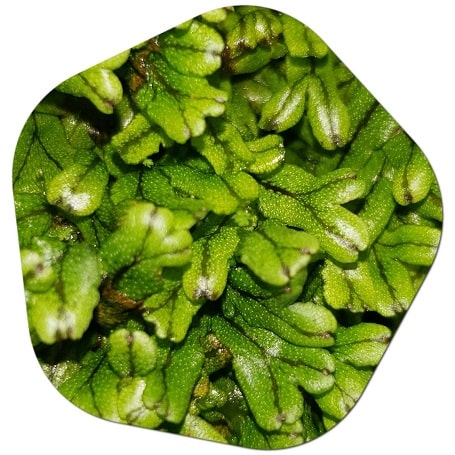What is the 10 example of non-flowering plants?
Non-flowering plants, also known as non-vascular plants or cryptogams, reproduce via methods other than producing flowers and seeds. Here are ten examples of non-flowering plants:
- Mosses (Bryophyta): Mosses are small, non-vascular plants that typically grow in moist environments. They reproduce via spores and lack true roots, stems, or leaves.
- Ferns (Pteridophyta): Ferns are vascular plants that reproduce by spores. They have fronds and are commonly found in shaded, humid areas.
- Liverworts (Marchantiophyta): Liverworts are small, non-vascular plants that often grow in damp and shaded places. They reproduce through spores.
- Hornworts (Anthocerotophyta): Hornworts are non-vascular plants characterized by their horn-like structures. They reproduce via spores and are often found in moist habitats.
- Algae (Various Phyla): Algae are a diverse group of aquatic, non-vascular plants that can be found in various habitats, including freshwater and marine environments. They range from single-celled to multicellular forms.
- Lichens (Symbiotic Associations): Lichens are unique organisms formed by the symbiotic relationship between fungi and algae or cyanobacteria. They are often found on rocks, trees, and other surfaces.
- Mosses (Lycophytes): Lycophytes, also known as clubmosses, are ancient vascular plants that reproduce via spores. They are not true mosses but share some similarities in appearance.
- Horsetails (Equisetum): Horsetails are another group of ancient vascular plants known for their jointed stems. They reproduce via spores and are often found in wetlands.
- Whisk Ferns (Psilotum): Whisk ferns are primitive vascular plants with reduced leaves and stems. They reproduce by spores and are often found in tropical and subtropical regions.
- Fungi (Various Phyla): Fungi are a diverse group of non-vascular organisms that play essential roles in decomposition, nutrient cycling, and mycorrhizal associations with plants. They reproduce via spores and do not contain chlorophyll.

These non-flowering plants have adapted to a wide range of ecological niches and play important roles in ecosystems, even though they lack the showy flowers and seeds commonly associated with flowering plants.
What are 5 examples of non-flowering plant?
Here are five examples of non-flowering plants:
- Mosses (Bryophyta): Mosses are small, non-vascular plants that typically grow in moist environments. They reproduce via spores and lack true roots, stems, or leaves. Mosses are known for their carpet-like growth in shaded and damp areas.
- Ferns (Pteridophyta): Ferns are vascular plants that reproduce by spores. They have fronds and are commonly found in shaded, humid areas, including forests and wetlands. Ferns are known for their distinctive, feathery leaves.
- Liverworts (Marchantiophyta): Liverworts are small, non-vascular plants that often grow in damp and shaded places. They reproduce through spores and are characterized by their flattened, ribbon-like thallus structure.
- Hornworts (Anthocerotophyta): Hornworts are non-vascular plants characterized by their horn-like structures. They reproduce via spores and are often found in moist habitats, such as near streams and on damp soil.
- Algae (Various Phyla): Algae are a diverse group of aquatic, non-vascular plants that can be found in various habitats, including freshwater and marine environments. They range from single-celled to multicellular forms and include green, red, and brown algae.

These non-flowering plants have various adaptations for survival and reproduction, and they play important ecological roles in their respective ecosystems.
What are non-flowering plants called?
Non-flowering plants are often referred to by several terms, including:
Non-Flowering Plants: This is a straightforward and commonly used term to describe plants that do not produce flowers.
Cryptogams: Cryptogams are a group of non-flowering plants that reproduce by spores rather than seeds. This term encompasses mosses, ferns, liverworts, and other non-vascular plants.
Seedless Plants: This term emphasizes the absence of seeds as a means of reproduction. It includes non-vascular plants like mosses and liverworts as well as vascular plants like ferns and horsetails.
Non-Vascular Plants: This term specifically refers to plants that lack vascular tissues (xylem and phloem), which are responsible for transporting water and nutrients. Non-vascular plants include mosses, liverworts, and hornworts.
Spore-Producing Plants: Many non-flowering plants reproduce through spores, so this term highlights their mode of reproduction.
Avascular Plants: Avascular plants are non-flowering plants that do not have a well-developed vascular system. This term is often used interchangeably with non-vascular plants.
Bryophytes: This term refers to mosses, liverworts, and hornworts collectively, which are all non-vascular plants. Bryophytes are characterized by their lack of vascular tissues and reliance on spore reproduction.
Ferns and Fern Allies: Ferns and some related non-flowering plants are often grouped under this term. Fern allies include horsetails, whisk ferns, and clubmosses.
These terms can be used interchangeably or with specific reference to particular groups of non-flowering plants, depending on the context of the discussion.
What are non-flowering plants with examples?
Non-flowering plants, also known as non-vascular plants or cryptogams, do not produce flowers or seeds for reproduction. Instead, they reproduce through spores or other methods. Here are examples of non-flowering plants along with their respective groups:
Mosses (Bryophyta):
- Common Moss (Polytrichum spp.): This is a widespread group of mosses found in a variety of habitats, from forests to wetlands.
- Sphagnum Moss (Sphagnum spp.): Sphagnum mosses are known for their role in forming peat bogs and are often used in horticulture.
Ferns (Pteridophyta)
- Bracken Fern (Pteridium aquilinum): Bracken fern is a common fern found in many regions and is known for its large, triangular fronds.
- Royal Fern (Osmunda regalis): This fern is named for its regal appearance, with feathery fronds and a crown-like arrangement.
Liverworts (Marchantiophyta)
- Marchantia (Marchantia polymorpha): Marchantia is a well-known liverwort with a flattened thallus structure and small, umbrella-like structures that contain reproductive organs.
Hornworts (Anthocerotophyta):
- Anthoceros species: Hornworts are named for their horn-like sporophyte structures. They are often found in damp habitats and have a distinctive appearance.
Algae (Various Phyla):
- Green Algae (Chlorophyta): Green algae encompass a diverse group of aquatic and terrestrial algae, including species like Spirogyra.
- Red Algae (Rhodophyta): Red algae are primarily marine and include species such as dulse and nori used in cuisine.
- Brown Algae (Phaeophyceae): Brown algae include kelp and other large seaweeds that form underwater forests in the ocean.
Lichens (Symbiotic Associations):
- Foliose Lichens (e.g., Parmelia spp.): Foliose lichens have leafy, flattened structures and are commonly found on tree bark.
- Fruticose Lichens (e.g., Cladonia spp.): Fruticose lichens have branched, shrub-like structures and are often found on rocks.
Mosses (Lycophytes):
- Clubmosses (Lycopodiaceae): Clubmosses are primitive vascular plants that reproduce via spores and include species like ground cedar (Diphasiastrum digitatum).
Whisk Ferns (Psilotum):
- Psilotum nudum: Whisk ferns are unique vascular plants that have reduced leaves and stems. They are often found in tropical and subtropical regions.
These non-flowering plants have diverse forms, adaptations, and ecological roles. They play important roles in various ecosystems and contribute to biodiversity.





